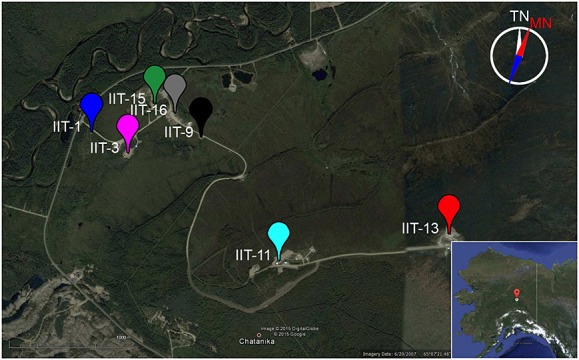Welcome to Our Data Archive!
A Global Positioning System (GPS) scintillation receiver array was established at high latitudes in 2013. The array consists of six dual-frequency (L1, L2C) ASTRA Connected Autonomous Space Environment Sensor (CASES) scintillation receivers currently sited at Poker Flat Research Range, Alaska. Separated horizontally over baselines from 100 m to 2 km latitudinally and and longitudinally, the receivers will allow us to study the spatial spectrum of the phase fluctuations induced by ionospheric irregularities that form in the auroral region. The receivers are based on technology developed at Cornell University, University of Texas, and ASTRA.
Here you can access text files of the low rate data (~1 s cadence), and for select days the 100 Hz power and phase data, we have collected.
There are two data sets:
1. An archive set from 2013 when 3 receivers were located at the University of Calgary, Canada. Data can be downloaded here.
2. A currently updating set for which these receivers were moved to Poker Flat Research Range, Alaska and 3 more receivers were added. Data can be downloaded here.

To see the data that is available please visit the calendar. The data and plots are provided as is. Please contact Seebany Datta-Barua (sdattaba@iit.edu) before using, displaying or publishing any data or plots provided here, and for more information.
Here you can access text files of the low rate data (~1 s cadence), and for select days the 100 Hz power and phase data, we have collected.
There are two data sets:
1. An archive set from 2013 when 3 receivers were located at the University of Calgary, Canada. Data can be downloaded here.
2. A currently updating set for which these receivers were moved to Poker Flat Research Range, Alaska and 3 more receivers were added. Data can be downloaded here.
To see the data that is available please visit the calendar. The data and plots are provided as is. Please contact Seebany Datta-Barua (sdattaba@iit.edu) before using, displaying or publishing any data or plots provided here, and for more information.
This project is supported by the National Science Foundation AGS-1139121.
